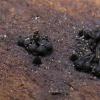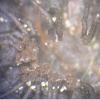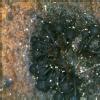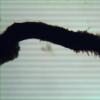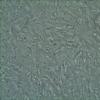
21-12-2025 09:32
Hello.A tiny ascomycete found embedded in wood in

21-12-2025 21:32
Pol DebaenstHello, Garden, Burgweg 19, Veurne, BelgiumOn 10/1

22-12-2025 23:38
Patrice TANCHAUDBonsoir, récolte sur un mur en pierre, apothéci

22-12-2025 00:47
Patrice TANCHAUDBonsoir, récolte à proximité du milieu dunaire

21-12-2025 21:40
Isabelle CharissouBonjour, j'aimerais connaitre les références de

20-12-2025 23:08
Patrice TANCHAUDBonsoir, récolte sur sol sablonneux dans l'arri�

Hello,
another pyrenomycete with distinct characters, but as I'm not familiar with pyrenomycetes I'm not too certain about the determination.
Macroscopically this is very similar to the drawing in DENNIS for Calosphaeria pulchella. However there are some differences:
- ecologically the species should be immersed in the substrate and only the long necks are to see. In my collection the whole fruitbodies were superfically "lying" on bark. It might be, that one layer of the bark split of not long before I found the perithecia, but nevertheless they were not immersed in wood.
- the necks of the perithecia are covered by a tomentum of orange hairs! See the fotos. I have not found that feature reported or drawn in the literature.
- the spores are slightly bigger than in DENNIS: 6-7,5 (8) x 2-2,2 (2,5) µm, but that may be due to my measurements being from living spores.
What is your opinion on this collection?
thank you and best regards,
Andreas
looks like Barbatosphaeria barbirostris. The ascospores should be 1-septate and it looks like they are in your photo.
Here's some literature:
http://www.mycologia.org/content/99/5/723.full.pdf
http://www.researchgate.net/publication/273261066_Molecular_systematics_of_Barbatosphaeria_(Sordariomycetes)_multigene_phylogeny_and_secondary_ITS_structure
Best wishes,
Gernot

Hallo Gernot,
mal wieder tausend Dank für die Hilfe - den hätte ich nie gefunden ....
Die Sporen waren in der Tat bisweilen septiert, aber ich hatte nicht den Eindruck dass sie dies bereits im Ascus gewesen wären.
beste Grüße,
Andreas

